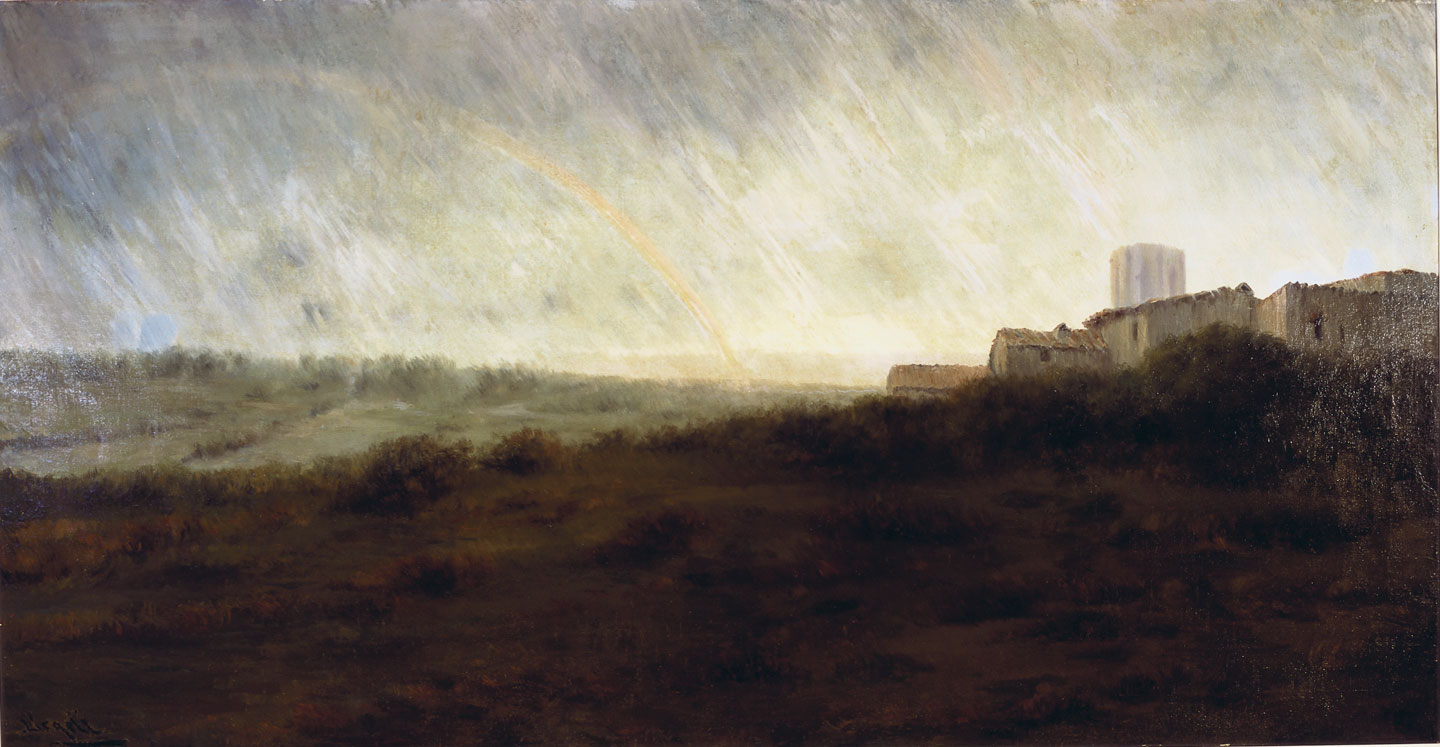Situated halfway between Romanticism and Realism, the two most important pictorial schools in Western art in the 19th century, Modest Urgell was one of the most original and iconic figures in Catalan painting prior to the great blossoming of the period of Modernisme. He produced a large body of work, most of which consisted of landscapes and similar themes that depict real places, the fields, villages and beaches that he sketched en plein air, a technique he learned from Gustave Courbet during his constant trips to Paris. Despite his repeated return to the same genre, his landscapes are inspired by nearly 50 different geographical places, mostly in Catalonia but also in Spain and France, all of them ordinary scenes and villages that he had visited during his numerous outings around Catalonia and elsewhere.
Like many other works he produced, Village with Rainbow, done in a landscape format, has a low horizon line that emphasises the vast plain and directs the gaze into the distance, with only the houses in a village forcing a link between the two planes. The artist’s swift and vigorous brushwork enhances the quality and use of an earthy palette with muted tones, but is detailed in the creation of the lighting effects that he used to build restless skies, in this case cut across by a rainbow. Time is frozen, an impression clearly linked to Romantic landscape art even though Urgell’s Romanticism is in the theme rather than in his technique. In fact, Urgell always based his works on reality. This is a very simple composition but one that is eloquent and surrounded in a lonely, melancholic atmosphere that heightens the mystery and poetry of the scene. Despite the schematic nature of his work, the artist managed to turn his pieces into an almost essential feature in the standard Catalan bourgeois home of the time.



